Add References and Set a License - C# .NET Core
This tutorial shows how to get started with the LEADTOOLS SDK in a C# .NET Core application. Before any functionality from the SDK can be leveraged, a valid runtime license will have to be set. For instructions on how to obtain a runtime license refer to Obtaining a License.
| Overview | |
|---|---|
| Summary | This tutorial covers how to set a license in a C# .NET Core application. |
| Completion Time | 30 minutes |
| Visual Studio Project | Download tutorial project (0 KB) |
| Platform | Windows C# Console Application |
| IDE | Visual Studio 2017, 2019 |
| Runtime License | Download LEADTOOLS |
Create the Project
Launch Visual Studio and select Create a new project, then select Next.
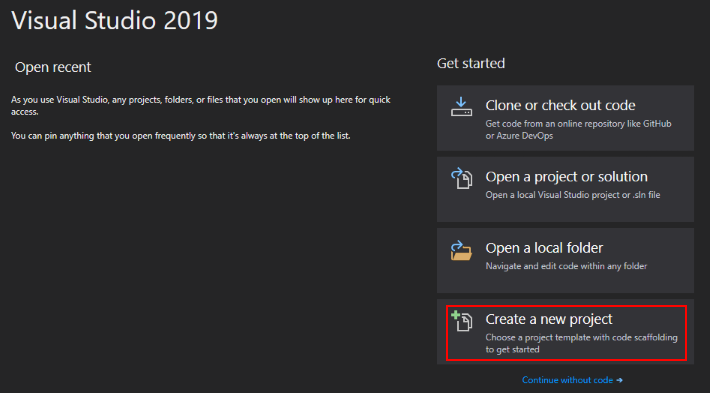
Select to create a new .NET Core Console application, then select Next.
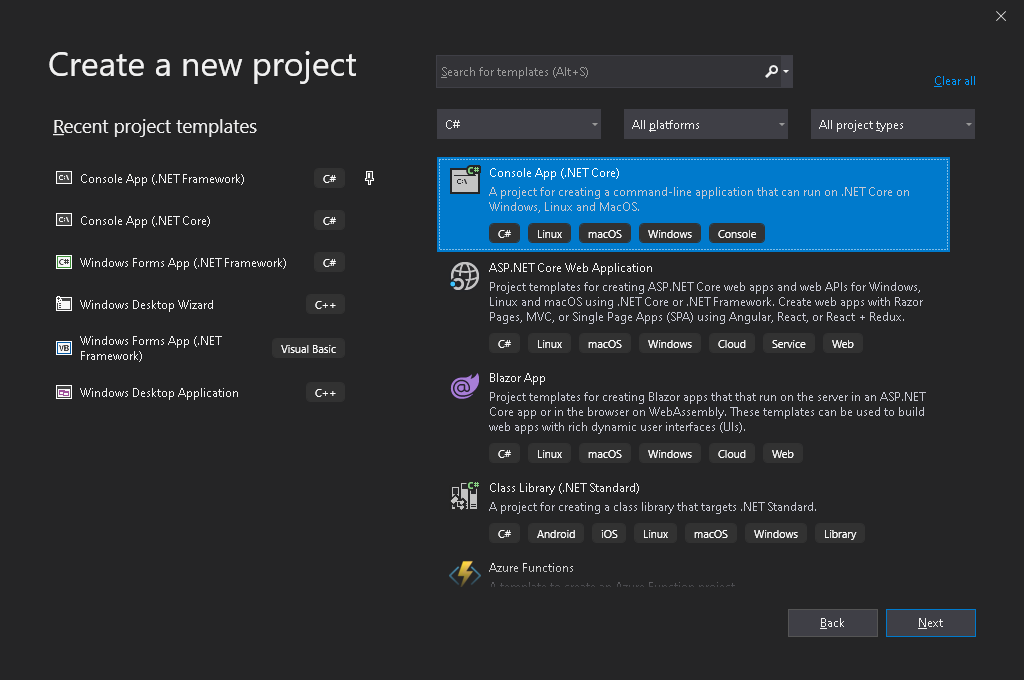
Add the project name and select the location for the project to be saved to, then select Create.
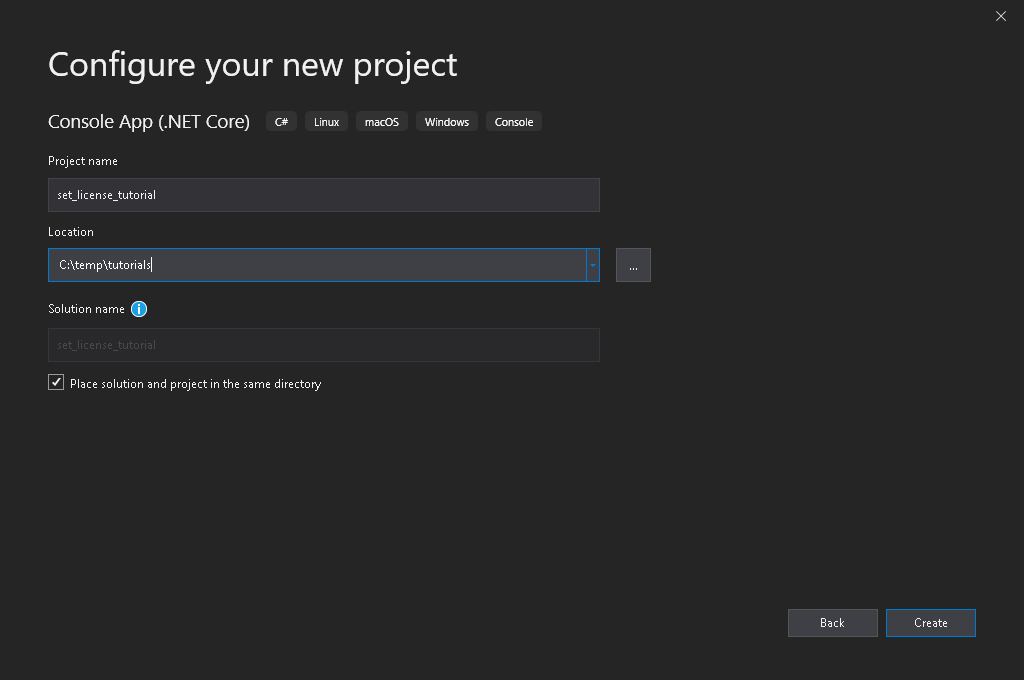
Add LEADTOOLS References via NuGet
To add the LEADTOOLS references in this tutorial, add a LEADTOOLS NuGet package since this will be using .NET Core.
Right-click on the C# project in the Solution Explorer and select Manage NuGet Packages...
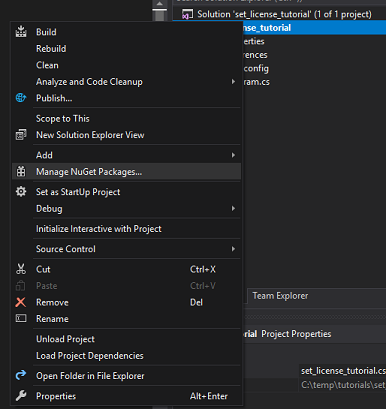
Browse for LEADTOOLS, then select any of the LEADTOOLS NuGet packages and install it. You will need to accept LEAD's End User License Agreement.
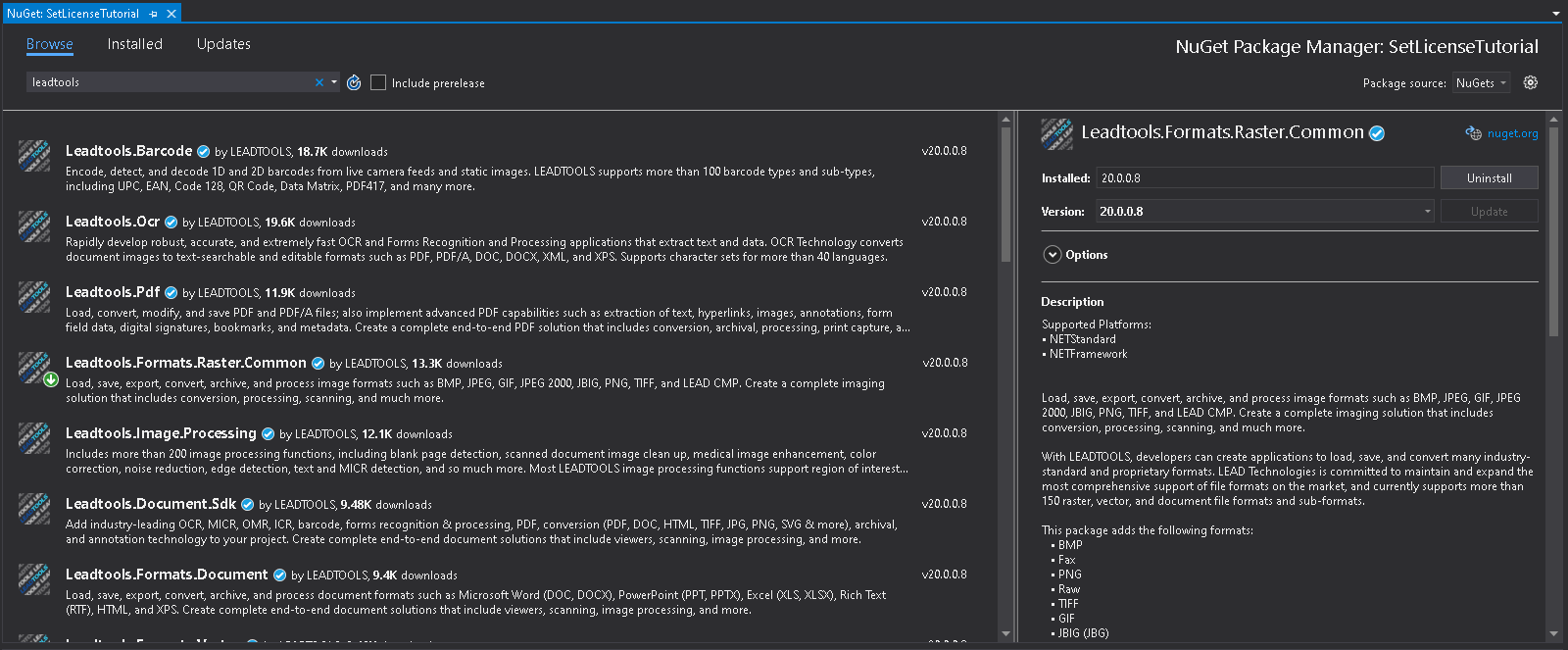
Add the Set License Code
Now that the LEADTOOLS references have been added to the project, add the relevant code to set your license.
Open the Program.cs in the Solution Explorer, then add using Leadtools; to the using block at the top.
In the Program class add a new method called SetLicense() and call it in the Main method. Add the below code to properly set your license.
using System;using Leadtools;namespace add_references_and_set_a_license_tutorial{class Program{static void Main(string[] args){if (!SetLicense())Console.WriteLine("Error setting license");elseConsole.WriteLine("License file set successfully");}static bool SetLicense(){if (RasterSupport.KernelExpired){try{// TODO: Replace this with your License File contentsstring licString = "[License]\n" + "License = <doc><ver>2.0</ver>`PASTE YOUR LICENSE CONTENTS HERE`</doc>";string developerKey = "PASTE YOUR DEVELOPER KEY HERE";byte[] licBytes = System.Text.Encoding.UTF8.GetBytes(licString);RasterSupport.SetLicense(licBytes, developerKey);}catch (Exception ex){Console.WriteLine(ex.Message);}}return !RasterSupport.KernelExpired;}}}
Run the Project
The project can then be built and run through Visual Studio or the command line provided the deployment environment has .NET Core supported and installed. To install .NET Core, refer to the installation guide on Microsoft's documentation site.
Windows
Run the project by pressing F5 or by selecting Debug then Start Debugging.
If the steps were followed correctly, a message will appear in the console showing License file set successfully.

Mac and Linux
Open the terminal and browse to the project directory. Then execute dotnet build to build the project and dotnet run to execute it. Other commands include dotnet clean, dotnet rebuild, and dotnet restore.
On Mac:
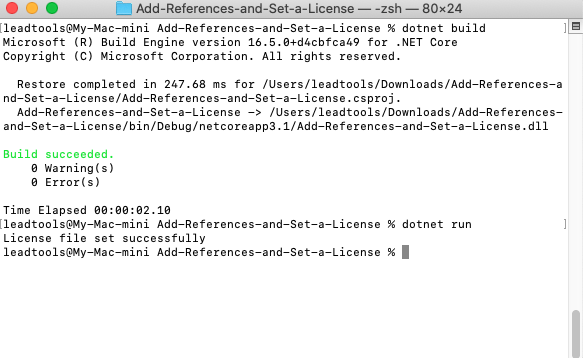
On Linux:
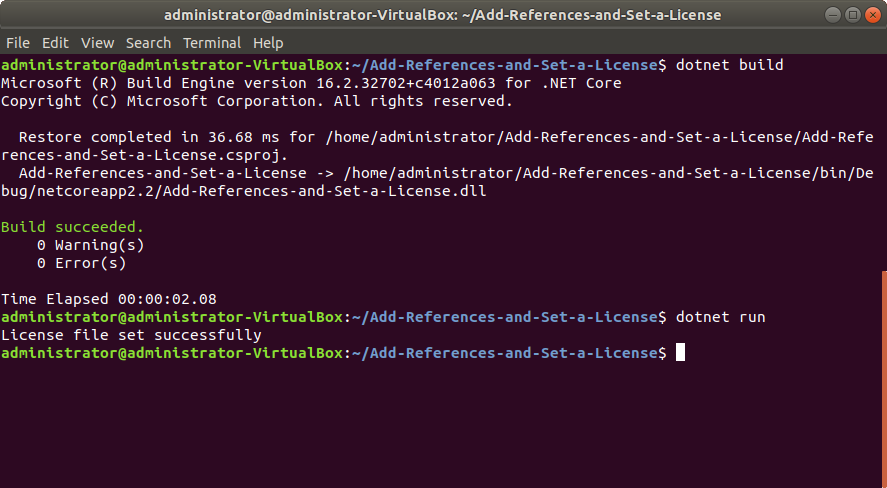
Wrap-up
This tutorial covered how to create a new C# .NET Core Project, how to add references via NuGet, and how to execute the project on Windows, Mac and Linux.
This is the basis for all C# .NET Core applications leveraging the LEADTOOLS SDK. All functionality in the SDK is unlocked via setting a license. The SetLicense method must be called before calling any other LEADTOOLS SDK functions.
Once the SDK is purchased, the evaluation license can be replaced with a valid runtime license to disable the Nag Message.
